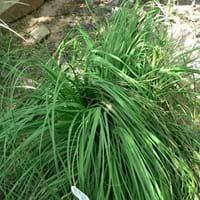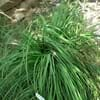Life Span
Perennial
Perennial
Origin
Southwestern United States, Mexico
Northeastern United States, Mid-Atlantic United States, Southeastern United States, North-Central United States, Central United States, South-Central United States
Types
Not Available
Apricot Delight, Copper canyon
Number of Varieties
Not Available
Habitat
Desert, Foot Hills, High elevation, Upland, Woodlands
Roadsides, sand dunes, Waste areas
USDA Hardiness Zone
Not Available
5-8
Sunset Zone
8, 9, 10, 11, 12, 13, 14, 15, 16, 17, 18, 19, 20, 21, 22, 23, 24
1a, 1b, 2a, 2b, 3a, 3b, 4, 5, 6, 7, 8, 9, 10, 11, 12, 13, 14, 15, 16, 17, 18, 19, 20, 21, 22, 23, 24
Habit
Cushion/Mound-forming
Clump-Forming
Flower Color
White, Green
Yellow
Flower Color Modifier
Bicolor
Bicolor
Fruit Color
Not Available
Tan
Leaf Color in Spring
Yellow green
Green
Leaf Color in Summer
Yellow green
Green
Leaf Color in Fall
Yellow green
Green
Leaf Color in Winter
Light Green
Light Green
Leaf Shape
Grass like
Oblong
Plant Season
Spring, Summer, Fall
Summer
Sunlight
Full Sun, Partial Sun
Full Sun, Partial Sun
Type of Soil
Loam, Sand
Loam, Sand
The pH of Soil
Acidic, Neutral, Alkaline
Acidic, Neutral, Alkaline
Soil Drainage
Well drained
Well drained
Bloom Time
Late Spring
Early Summer, Summer, Late Summer
Tolerances
Drought
Variety of soil types
Where to Plant?
Container, Ground, Pot
Container, Ground, Pot
How to Plant?
Seedlings
Divison, Seedlings, Stem Planting
Plant Maintenance
Medium
Low
Watering Requirements
Average Water Needs, Water once every two or three weeks
Average Water Needs, Do Not over Water, Never Over-water, Requires regular watering, Water more in summer
In Summer
Lots of watering
Lots of watering
In Spring
Moderate
Moderate
In Winter
Average Water
Average Water
Soil pH
Acidic, Neutral, Alkaline
Acidic, Neutral, Alkaline
Soil Type
Loam, Sand
Loam, Sand
Soil Drainage Capacity
Well drained
Well drained
Sun Exposure
Full Sun, Partial Sun
Full Sun, Partial Sun
Pruning
No need to prune, Remove damaged leaves, Remove dead branches, Remove dead leaves
Remove damaged leaves, Remove dead branches, Remove dead leaves, Remove dead or diseased plant parts
Fertilizers
All-Purpose Liquid Fertilizer
All-Purpose Liquid Fertilizer, fertilize in growing season
Pests and Diseases
Red blotch
Slugs, Snails
Plant Tolerance
Drought
Variety of soil types
Flower Petal Number
Single
Single
Foliage Texture
Fine
Fine
Foliage Sheen
Matte
Matte
Attracts
Butterflies
Insects
Allergy
Anxiety, Depression, High blood cholestrol, High blood pressure, Pain, Stress
Abdominal pain, Constipation, Diarrhea, Skin irritation
Aesthetic Uses
Not Used For Aesthetic Purpose
Beautification, Borders, Landscape Designing, Showy Purposes
Beauty Benefits
Not Available
Good for skin, Making cosmetics, Stops hair loss
Edible Uses
Insignificant
Yes
Environmental Uses
Air purification, Erosion control, Food for animals, Provides ground cover
Air purification, Food for insects, Versatility
Medicinal Uses
Not Available
Eczema
Part of Plant Used
Leaves
Root
Other Uses
Animal Feed
Decoration Purposes, Medicinal oil, Showy Purposes, Used as Ornamental plant, Used for its medicinal properties
Used As Indoor Plant
No
Yes
Used As Outdoor Plant
Yes
Yes
Garden Design
Rock Garden, Wall
Edging, Feature Plant, Groundcover, Mixed Border
Botanical Name
NOLINA microcarpa
OENOTHERA 'Cold Crick'
Common Name
Sacahuista, Palmilla
Suncups, sundrops
In Hindi
Bear Grass
Evening Primrose
In German
Bärn-Gras
Evening Primrose
In French
ours Herbe
onagre
In Spanish
Hierba de oso
onagra
In Greek
αρκούδα Grass
Νυχτολούλουδο
In Portuguese
bear Grass
Evening Primrose
In Polish
miś Trawa
wiesiołka
In Latin
herbas ferunt
vespere Primrose
Phylum
Magnoliophyta
Magnoliophyta
Class
Liliopsida
Magnoliopsida
Family
Liliaceae
Onagraceae
Genus
Nolina Michx
Oenothera
Clade
Angiosperms, Monocots
Angiosperms, Eudicots, Rosids
Tribe
Not Available
Onagreae
Subfamily
Nolinoideae
Onagroideae
Number of Species
Not Available
Properties of Bear Grass and Evening Primrose
Wondering what are the properties of Bear Grass and Evening Primrose? We provide you with everything About Bear Grass and Evening Primrose. Bear Grass doesn't have thorns and Evening Primrose doesn't have thorns. Also Bear Grass does not have fragrant flowers. Bear Grass has allergic reactions like Anxiety, Depression, High blood cholestrol, High blood pressure, Pain and Stress and Evening Primrose has allergic reactions like Anxiety, Depression, High blood cholestrol, High blood pressure, Pain and Stress. Compare all the properties and characteristics of these two plants. Find out which of these plant can be used as indoor plant. If you are interested to decorate your house and garden, find out aesthetic uses, compare them and select the plant which will beautify your surrounding. Along with beautification, try comparing medicinal and edible uses of Bear Grass and Evening Primrose and you can choose the plant having best and most benefits.
Season and Care of Bear Grass and Evening Primrose
Season and care of Bear Grass and Evening Primrose is important to know. While considering everything about Bear Grass and Evening Primrose Care, growing season is an essential factor. Bear Grass season is Spring, Summer and Fall and Evening Primrose season is Spring, Summer and Fall. The type of soil for Bear Grass is Loam, Sand and for Evening Primrose is Loam, Sand while the PH of soil for Bear Grass is Acidic, Neutral, Alkaline and for Evening Primrose is Acidic, Neutral, Alkaline.
Bear Grass and Evening Primrose Physical Information
Bear Grass and Evening Primrose physical information is very important for comparison. Bear Grass height is 152.40 cm and width 121.92 cm whereas Evening Primrose height is 1.00 cm and width 0.10 cm. The color specification of Bear Grass and Evening Primrose are as follows:
Bear Grass flower color: White and Green
Bear Grass leaf color: Yellow green
Evening Primrose flower color: Yellow
- Evening Primrose leaf color: Green
Care of Bear Grass and Evening Primrose
Care of Bear Grass and Evening Primrose include pruning, fertilizers, watering etc. Bear Grass pruning is done No need to prune, Remove damaged leaves, Remove dead branches and Remove dead leaves and Evening Primrose pruning is done Remove damaged leaves, Remove dead branches, Remove dead leaves and Remove dead or diseased plant parts. In summer Bear Grass needs Lots of watering and in winter, it needs Average Water. Whereas, in summer Evening Primrose needs Lots of watering and in winter, it needs Average Water.





